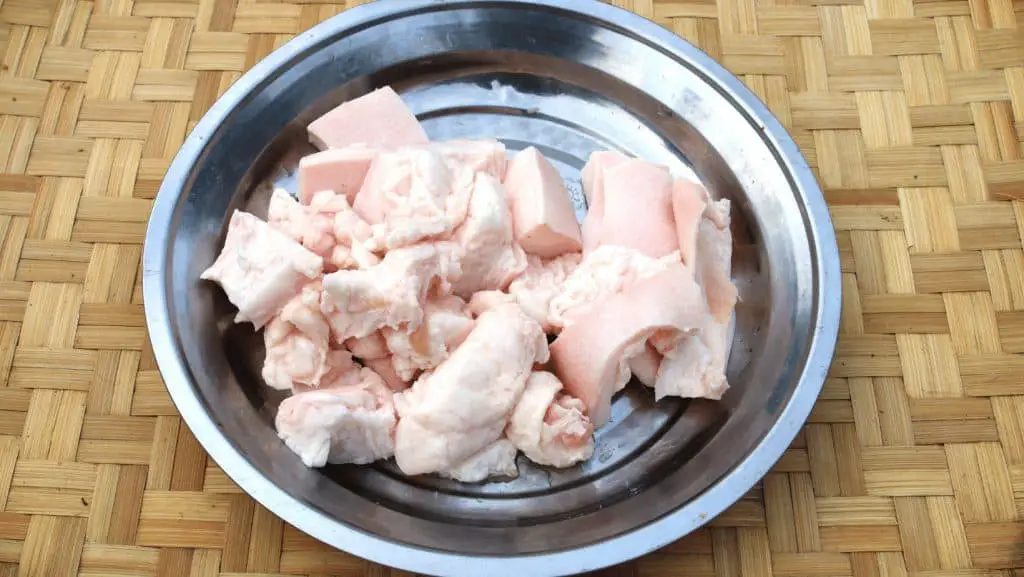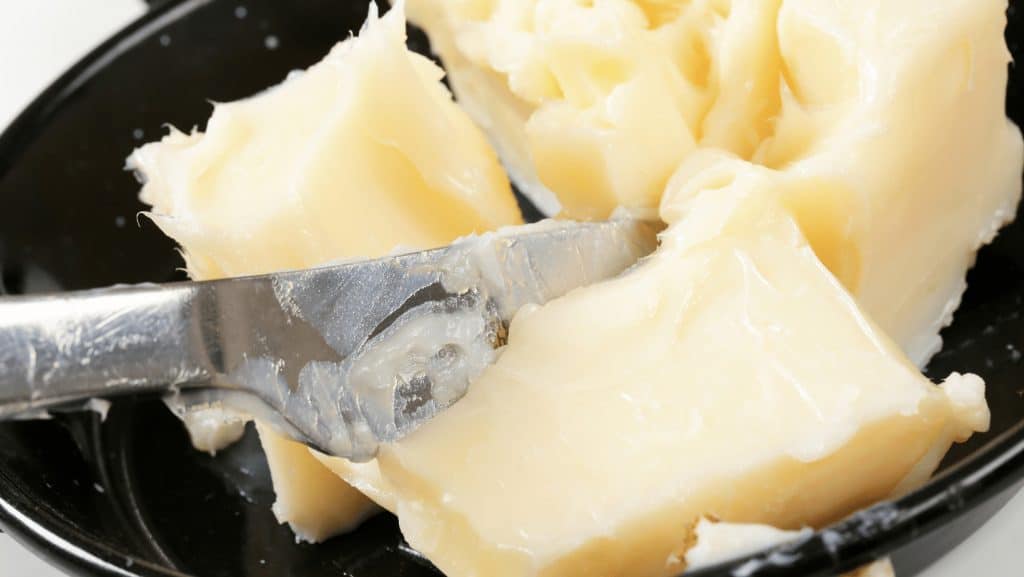How Is Cooking With Beef Fat Better
When you're cooking to impress or just want to bring out the best flavors, using beef fat or pork fat can really elevate a dish. Beef fat (tallow) or pork fat (lard) are both relatively inexpensive ingredients. When used in small doses they can actually go a long way. But, knowing the differences in the taste, texture, and nutrition benefits when you use each of beef fat or pork fat in cooking is key.
Here we do a thorough comparison of each and highlight exactly how you can use them in your cooking to put a smile on everyone's face. Remember: fat means flavor!
Beef Fat Vs. Pork Fat
Beef fat (Tallow) and pork fat (Lard), both have a place in cooking. Although they are both animal fats, beef tallow is thick and almost solid at room temperature and lard is easily spreadable. Both tallow and lard can be made yourself in your kitchen using leftover juices and fat trimmings.
I n cooking, beef tallow is best for frying and has a rich savory flavor, whereas pork lard is much more versatile being used in baking, roasting, and sauteing.
Lard is a good source of Vitamin D and tallow is rich in Omega 3's and Vitamin E. As they both have around a 3-month shelf life they are great to keep in the refrigerator for whenever you want to take a meal to the next level.
What Is Beef Fat? (Tallow)

Beef fat is a layer of fat sliced directly from the cow. When you cook (or "render") beef fat to remove the impurities, you'll get a delicious and pure cooking fat that you can use with a variety of dishes. Some people use beef tallow to make soap, candles, moisturizers and other products.
However, home cooks traditionally use beef tallow to cook, bake and fry their favorite foods. A little in the gravy pot makes for an amazing homemade gravy too!
Beef tallow infuses your food with a rich buttery flavor without making it soggy. Dishes cooked in beef tallow are crispy on the outside and soft and delicious on the inside, making tallow perfect for steak, chicken, onion rings, fried vegetables, and other favorites. Beef tallow can also keep your dishes from sticking to the bottom of the pan while they cook, while also adding a warm rich flavor.
Once you've rendered your beef tallow, the fat will remain liquid when you heat it up and turn solid when you let it cool. Simply heat up the solid tallow to get a delicious yellow cooking fat.
If you drain your ground beef after it's cooked, it's worth keeping all that fatty juice too! Or, don't drain it at all as it can cause tough ground beef anyway!
Cooking With Beef Fat
Using beef fat is just as easy as pouring vegetable oil into a pan. The main difference is that you'll get extra nutrients with beef tallowand you're using a vital part of the animal that often goes to waste. Simply place the solid tallow in the pan and wait for it to melt before you add the meat or vegetables.
When you're done, store the rest of the tallow in an airtight container. You don't have to refrigerate beef tallow as long as you keep the container sealed. But, If you store it in the fridge, you are ensuring it stays safe for a lot longer, but it might take more time to melt the tallow. To make your own tallow, you can use the fat trimmings of any
What Is Pork Fat? (Lard)

Most cuts of pork are are surrounded by a handsome amount of fat. Lard is the layer of fat attached to a pig and like beef fat, artisans often use pork fat to make candles, soap and skincare products. But, when you're in the kitchen, you can use pork fat to cook meat and vegetables in a pan. Pork fat creates a rich, bubbling cooking fat that's loaded with protein.
When you buy raw pork fat, there might be meat and other impurities still attached. You can slow cook (or "render") the fat to remove the impurities and turn the pork fat into pure lard. Once you've created the lard, you can use it as a cooking fat for your dishes as a replacement for oils.
In particular 'leaf fat' produces pure, creamy lard that spreads like butter. Leaf fat comes from the stomach area of the pig. If you want pure fat that doesn't taste like pork, ask your butcher or supplier for leaf fat instead of regular pork fat.
You can also easily make lard yourself with the offcuts of fat from any large pork cuts you might be preparing. For example, when you get yourself a nice pork shoulder or pork roast, you can often trim off the 'hard fat' and render it down yourself by adding it to a saucepan on incredible low heat until it's all rendered and effectively 'melted'
Cooking With Pork Fat
Once you've rendered your fat, you can use it in a variety of dishes. Pork fat tastes great with meat dishes like bacon and sausage. If your fat is pure enough, you could use it in baked goods and other dishes that require fat. Pure lard won't have the meaty aftertaste that you'll get with unrendered fat either, so if you're adding it to roast potatoes they won't taste porky at all!
If you're trying to lose weight, pork fat offers a keto-friendly way to cook your favorite meals. Use pork fat when you cook meaty, savory dishes like cracklings, pork chops or pork belly.
Differences Between Beef Fat And Pork Fat
Where It Comes From
Most tallow comes from the kidney area of the cow. While cows have a layer of fat underneath their skin, it's thinner and usually left on the cow to keep the meat from drying out. Some home cooks make tallow from leftover beef trimmings like I do after trimming brisket.
Conversely, lard comes from different parts of the pig. Like cows, pigs have a section of fat around their kidneys. This fat is high in saturated fat and creates the "purest" lard when rendered. Back fat comes from the layer of fat underneath the pig's skin. This fat is lower in saturated fat but still rich and delicious.
Taste Difference
Tallow tends to have a meaty aftertaste that lingers in baked goods. So beef fat might not be the best option for cookies or brownies, but it's great for preparing meat, french fries, fried potatoes and everything else that pairs well with the flavor of beef.
If you render your lard from back fat, you might notice a slight meaty aftertaste. Lard rendered from kidney fat typically has a "pure" taste that makes it ideal for baked goods. Either way, both types of lard have a mild flavor that lets the taste and texture of your dish stand out, all while adding a rich creaminess.
Texture Difference
Solid tallow is harder than lard and more difficult to spread. After you cook your meal, the tallow can resolidify and affect the texture of your food. You'll also notice if you refrigerate dishes with lots of beef fat in them, it appears to collect at the top of the dish as a filmy white-yellow layer. Although not exactly pleasant to look at, when reheating it it simply melts once again. Rendered lard is much softer, making it easy to manipulate.
Lard is more spreadable and ideal for dishes that need rich cooking oil. When you reheat lard or any kind of pork fat it tends to melt very easily and help the meat stay moist. Handy to know when you're
reheating pork belly for example.
Key Nutritional Differences
While most people think fat is an unhealthy ingredient that clogs your arteries, tallow and lard are actually packed with nutrients. Lard is loaded with vitamin D that boosts your immune system and improves your body's natural functioning. Similarly, tallow contains omega 3 fatty acids and vitamin E that reduce your risk of various diseases.
However, keep in mind that you won't get most of these benefits if you buy your fat from factory farms. The animals in these farms get no sunlight exposure and eat food that doesn't boost their nutritional content. Instead of buying fat from the grocery store, buy it directly from a local farm or a butcher who buys meat from farmers. Or, do yourself one better and try making it yourself. It's not too difficult but does take some time!
Why Is Beef Fat Considered Unhealthier Than Pork Fat?
Beef fat is considered to be unhealthier than pork fat because beef fat has more saturated fat than pork. Saturated fat is said to be bad for you as it can raise your cholesterol and increase the risk of heart disease. However, good cholesterol in lard is seen to have a positive effect.
This is really just a bit of controversy as pork fat also contains saturated fat too, plus both contain unsaturated fats, monounsaturated fat, and trans fat. The best rule is to take a balanced approach and don't over consume beef fat or pork fat. Instead use it on special occasions to really pack some flavor into your roasts or when preparing your feasts!
Source: https://grillsimply.com/beef-fat-vs-pork-fat/
0 Response to "How Is Cooking With Beef Fat Better"
Postar um comentário